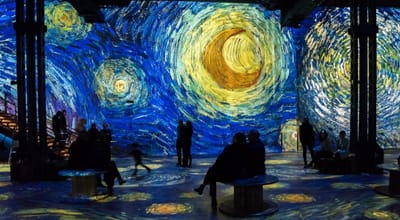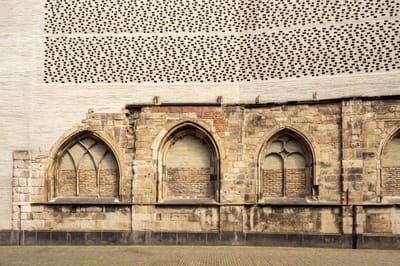The Four Types of Curiosity
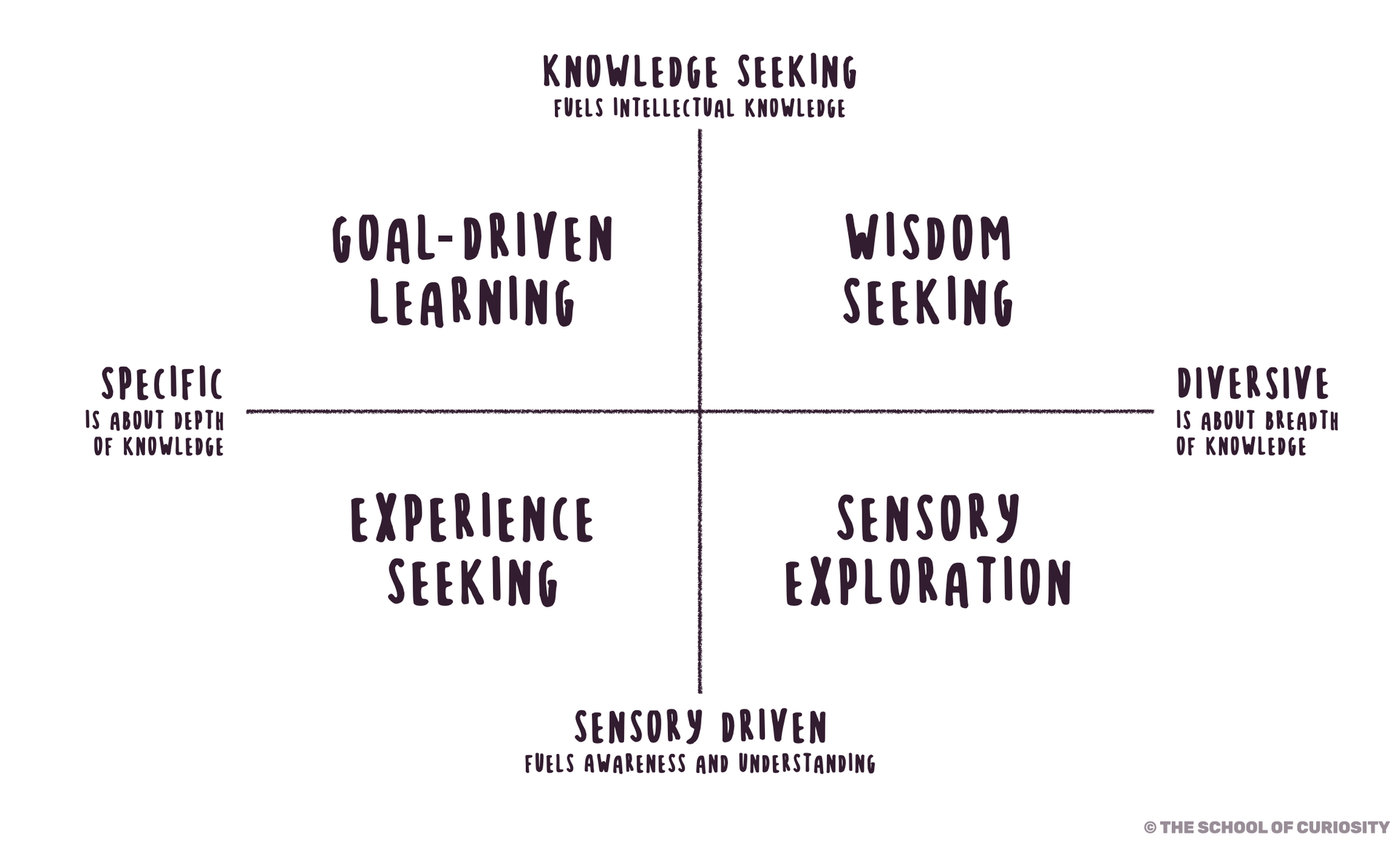
Now that we've explored the dimensions of curiosity, knowledge-seeking versus sensory-driven and specific versus diversive, I believe that we should take the framework a step further and define the specific types of curiosity that emerge from the interplay of its dimensions. By doing this, we can gain a clearer understanding of how curiosity shapes our pursuit of knowledge and experiences in everyday life.
Each axis of curiosity presents us with different ways of exploring the world, and when combined, they create four distinct types. These types help us better understand our own learning tendencies, from the structured pursuit of mastery to the joy of open-ended exploration.
Let’s get started.
Goal-driven learning
(Knowledge-seeking, Specific)
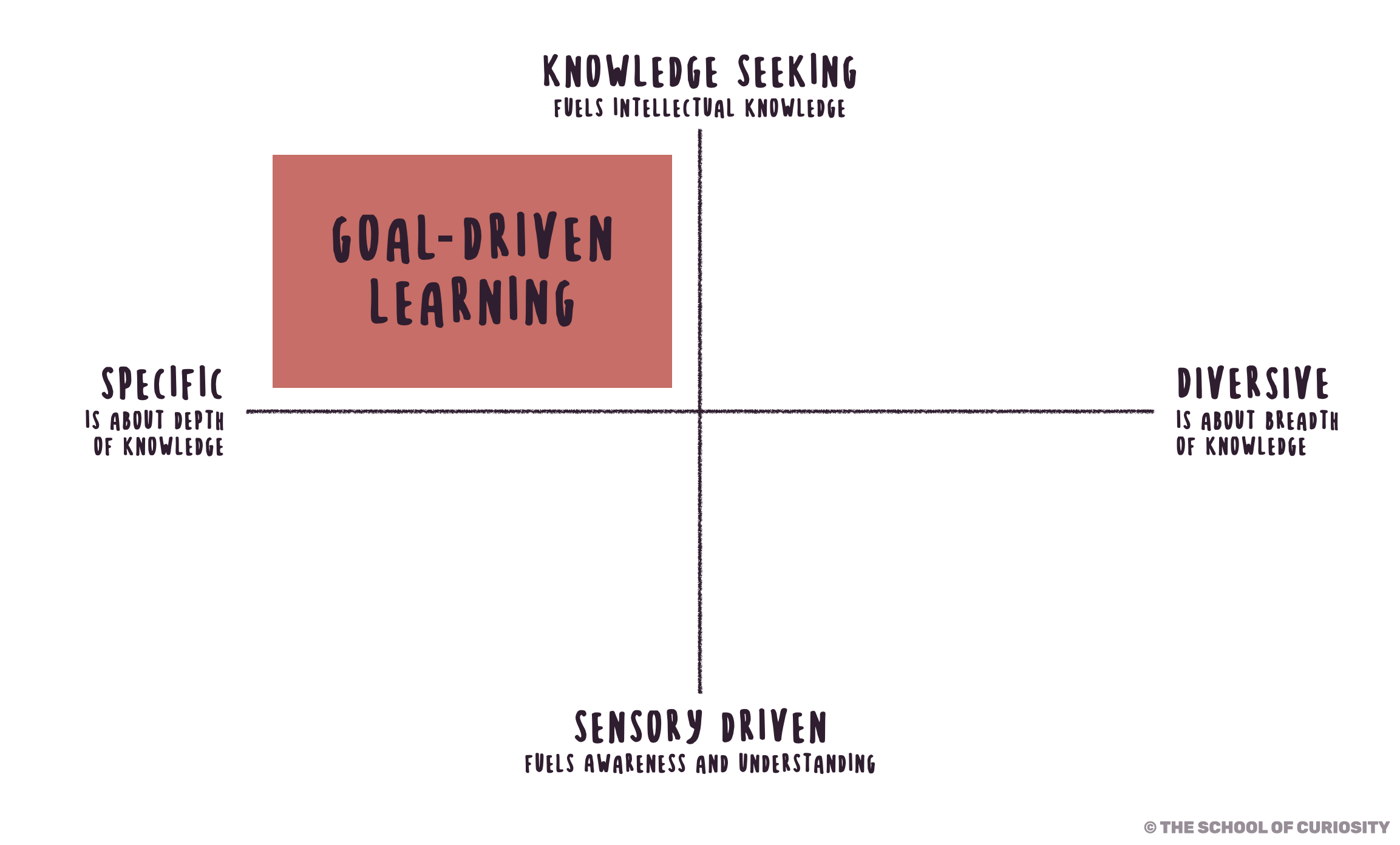
Goal-driven learning is a methodical and focused approach to acquiring knowledge and skills, characterized by a clear sense of purpose and a deliberate pursuit of specific objectives. It's akin to setting sail on a journey with a well-charted course, where each milestone represents a step closer to mastery.
Imagine someone passionate about music, meticulously practicing scales and chord progressions to become proficient at playing an instrument, or an aspiring programmer immersing themselves in coding tutorials to unlock the secrets of software development. These individuals are driven by a deep-seated determination to excel in their chosen field, leveraging their innate curiosity to fuel their quest for expertise.
At the heart of goal-driven learning lies a structured framework, where learners methodically engage in systematic inquiry and deliberate practice to deepen their understanding of a subject. Whether it's poring over textbooks, attending workshops, or seeking guidance from mentors, goal-driven learners leave no stone unturned in their pursuit of excellence.
Characteristic traits of goal-driven learning include persistence, discipline, and a relentless pursuit of improvement. It’s about possessing a strong sense of direction, channeling energies towards achieving tangible outcomes, such as obtaining certifications, advancing their careers, or mastering new skills.
Characteristics:
- Focused, intentional pursuit of specific knowledge.
- Structured approach with clear learning objectives.
- Systematic inquiry and deliberate practice.
Wisdom seeking
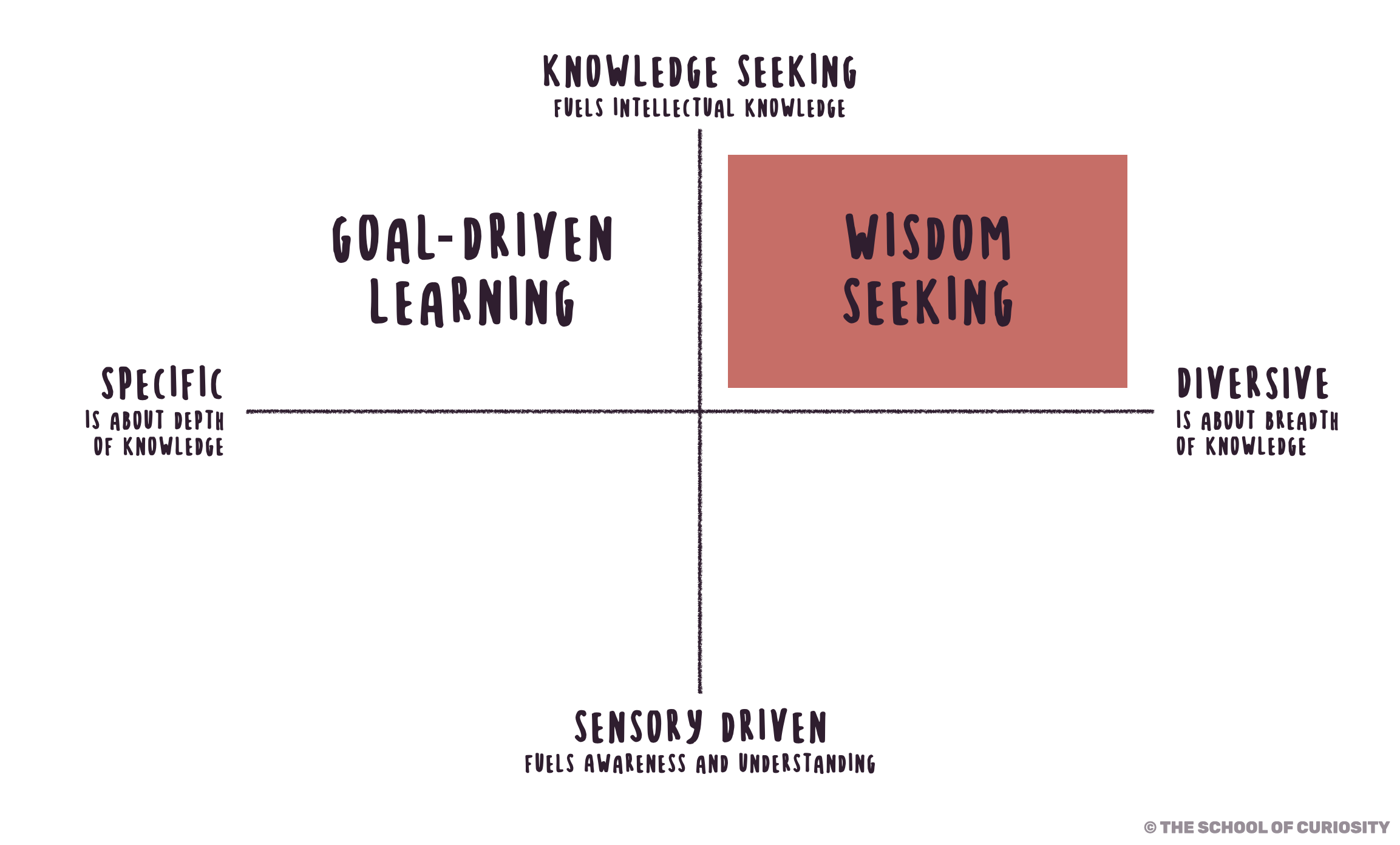
(Knowledge-seeking, Diversive)
Wisdom-seeking curiosity is marked by a broad and inquisitive approach to learning, fueled by a profound longing to delve into life's complexities and ponder existential questions. This form of curiosity gravitates towards a diverse, if not infinite, array of knowledge sources.
It embodies a fervent quest to comprehend everything about anything. Whether delving into the history of Africa one moment or immersing oneself in a podcast about technology the next, it mirrors the multifaceted interests of historical figures like Leonardo Da Vinci, who pursued understanding across numerous disciplines.
At its core, wisdom-seeking entails an insatiable desire to unearth the deeper significance of existence, drawing insights from various perspectives and traditions.

Key traits of wisdom seeking include open-mindedness, reflection, and a steadfast commitment to lifelong learning. It is driven by the pursuit of personal growth, introspection, and forging deeper connections with yourself and the world around you. The journey holds as much significance as the destination, with the joy of discovery often outweighing any predetermined outcomes.
To nurture personal development, wisdom seeking may engage in practices such as introspection, journaling, or engaging in meaningful conversations with others.
In this approach, while achieving proficiency in a subject may be a goal, it's not the sole focus. Rather, it's about being inspired by the subject matter and attaining a level of understanding that stimulates new perspectives. For instance, reading a book on theater not with the intent of crafting a theater piece, but to glean insights from its techniques and enrich one's thinking.
Characteristics:
- Broad, exploratory approach to gaining deep insights.
- Engagement with diverse perspectives and traditions.
- Reflective contemplation and integration of insights.
Experience seeking
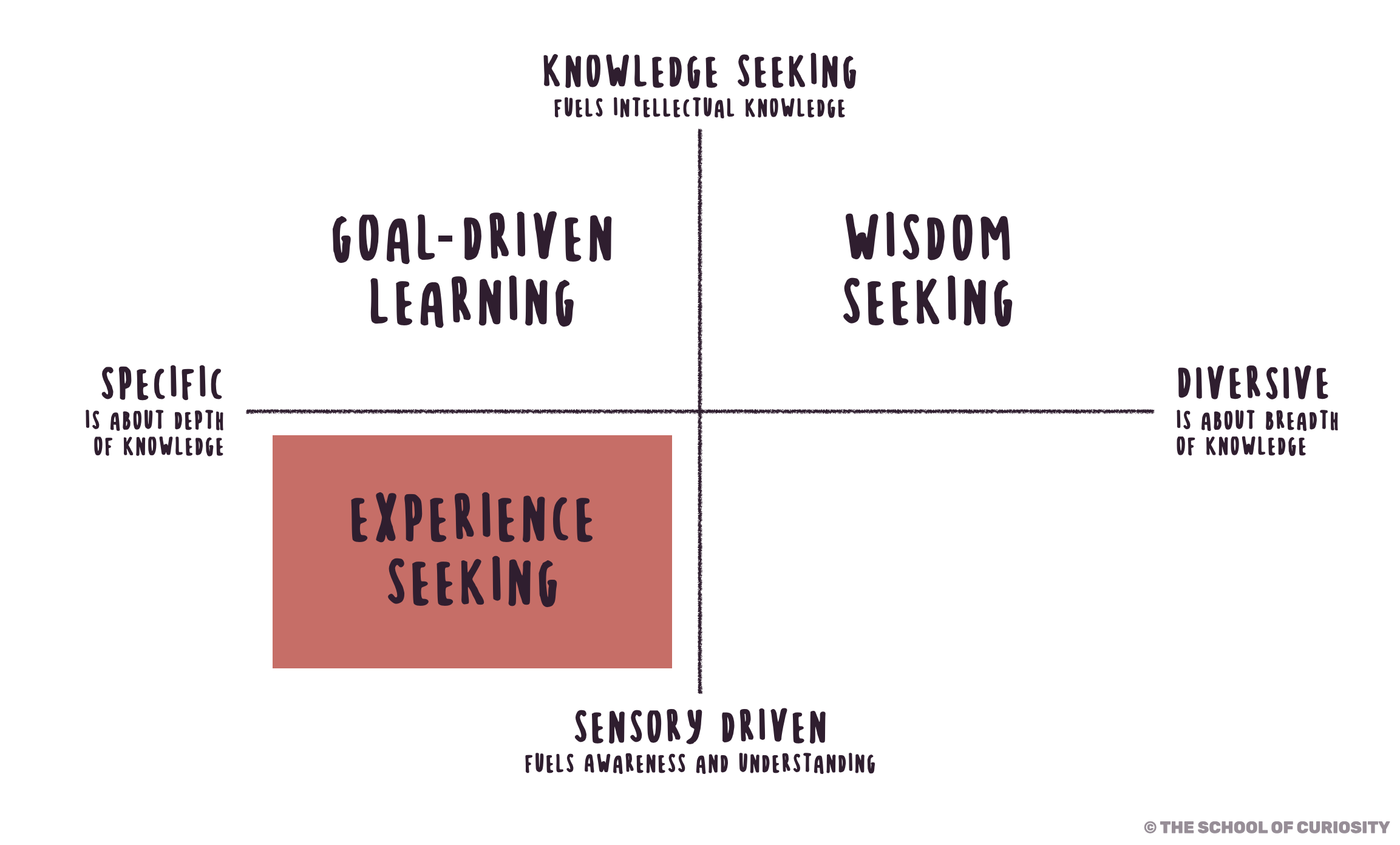
(Sensory-driven, Specific)
Experience-seeking curiosity is akin to embarking on a curated journey of sensory exploration, where every adventure promises a distinct and predictable array of sensations.
Imagine the excitement of attending a live concert, where the pulsating rhythms and vibrant melodies promise to ignite the senses in a predictable yet exhilarating manner. Or picture the thrill of skydiving, where the rush of wind against your skin and the breathtaking views provide a controlled yet adrenaline-fueled experience.

The allure lies not just in the novelty of the experience but in the assurance of what to expect. You approach each adventure with a sense of anticipation, knowing exactly how the senses will be engaged and what sensations you can anticipate. This sense of control adds a layer of comfort and excitement to explorations, allowing to fully immerse in the moment without fear of the unknown.
In a world brimming with endless possibilities, experience seeking navigates the landscape of sensory-rich encounters with precision and purpose, seeking out experiences that promise to deliver a predictable yet exhilarating sensory journey.
Characteristics:
- Targeted exploration of sensory-rich activities.
- Seeking out specific experiences aligned with interests or passions.
- Embracing novelty and excitement in experiential pursuits.
Sensory exploration

(Sensory-driven, Diversive)
Sensory exploration curiosity embarks on a captivating journey through the rich tapestry of sensory stimuli, where every moment holds the promise of discovery and wonder. Those who possess this curiosity possess an insatiable thirst for the diverse sensations that the world offers.
Unlike experience seeking, the journey is not predetermined; instead, it embraces the unpredictability of sensory exploration. It’s for example going to a dining experience in the dark or visiting a distant land with an open mindset and without a set goal. It’s embracing each encounter as an opportunity to engage with the world in new and unexpected ways.
At the heart of sensory exploration lies a deep sense of curiosity and creativity, driving individuals to seek out novel and diverse experiences that engage their senses on multiple levels. They are drawn to activities that challenge their perceptions and expand their sensory horizons, whether through immersive art installations, interactive performances, or sensory-enhancing technologies. For sensory explorers, the journey itself holds as much significance as the destination, with each moment offering the potential for profound insight and discovery. One of the best examples of a sensory explorer can be found in performance artist Marina Abramović. Abramović's performance piece "The Artist is Present" at the Museum of Modern Art in 2010 vividly illustrates her role as a sensory explorer. During the exhibition, Abramović sat silently at a table for hours each day, inviting visitors to sit across from her and share a moment of connection. This intimate encounter transcended verbal communication, relying solely on the exchange of energy and presence between Abramović and the participant.
In the realm of sensory exploration, every encounter is a celebration of the extraordinary complexity and beauty of the world, inviting individuals to engage with their senses in ways that transcend the ordinary and illuminate the extraordinary.
Characteristics:
- Broad, eclectic engagement with diverse sensory stimuli.
- Fascination with the sensory richness and diversity of the world.
- Curiosity-driven exploration of novel sensory experiences.
Embracing the Full Spectrum of Curiosity

Understanding the four types of curiosity offers us valuable insight into how we approach learning, discovery, and personal growth. Each type serves a unique purpose, whether it's the pursuit of deep knowledge, the thrill of new experiences, or the joy of exploring the unknown without a set destination.
While we may naturally gravitate toward one type more than others, true growth lies in cultivating a balance between them. By embracing both structured and spontaneous curiosity, and blending focused pursuits with open-ended exploration, we can enrich our lives with deeper understanding and more meaningful experiences.
Curiosity is not a fixed trait but a dynamic force that evolves with us. The key is to remain open: exploring new avenues, challenging our perspectives, and allowing ourselves to be both disciplined learners and adventurous explorers. When we nurture curiosity in all its forms, we unlock our potential to grow, create, and connect with the world in profound ways.
So, take a moment to reflect: which type of curiosity resonates with you the most? And how can you step beyond your comfort zone to embrace the other dimensions, creating a more holistic and fulfilling approach to lifelong learning?
Let's keep exploring.

